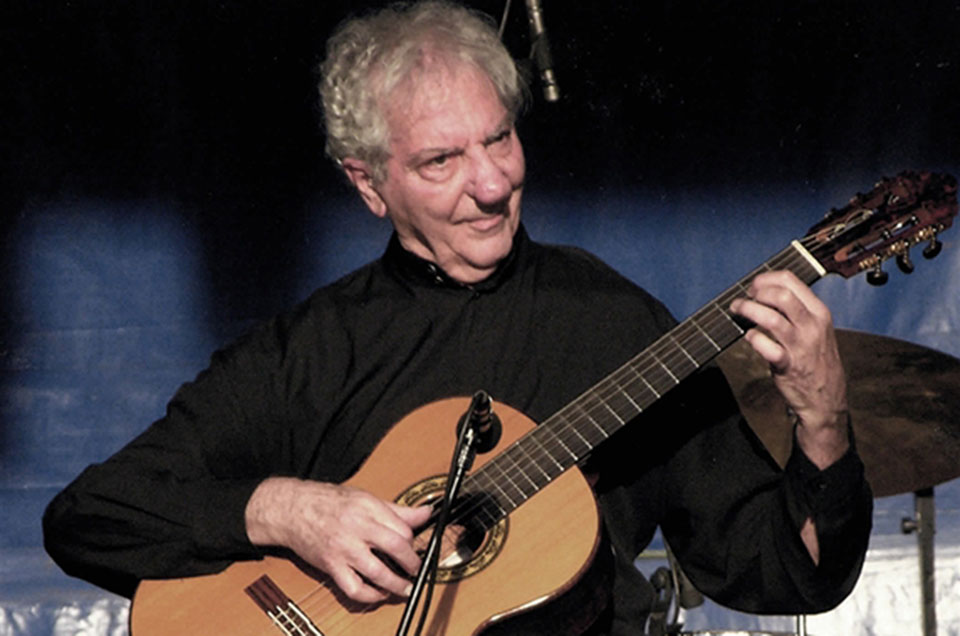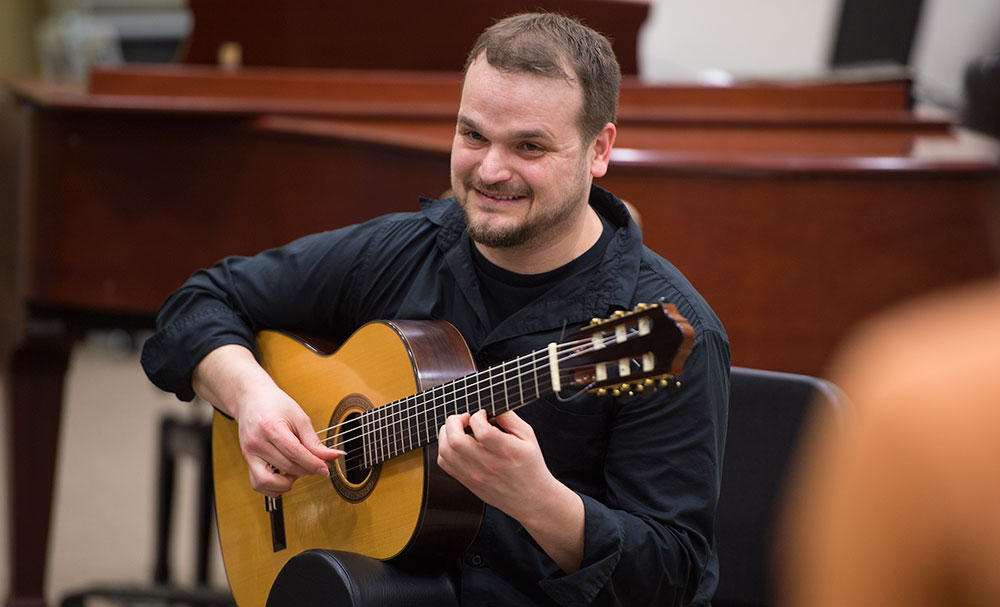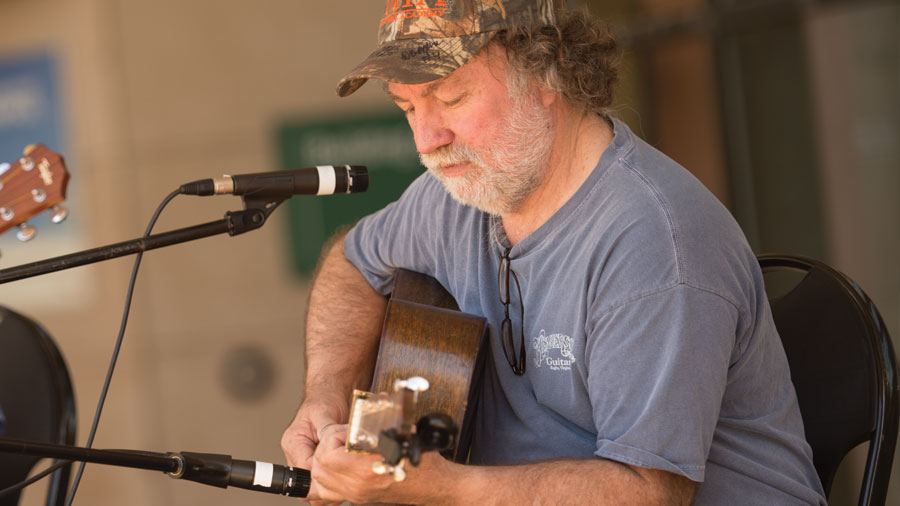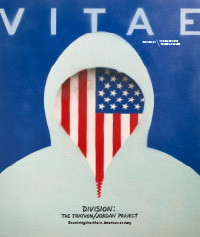Guitar Heroes Unite
at Valencia Concert Series
//BY JIM ABBOTT
If you want to start a concert series devoted to guitars, it helps if your boss also happens to be a six-string fanatic.
For Troy Gifford, music program director at Valencia College, the seeds for an inaugural Master Guitarist Series in February were planted in a conversation he had with another guitar lover: Valencia College President Sandy Shugart.
“We’re both guitarists, and we were chatting at commencement last year,” Gifford says. “I was talking about the artists we were bringing in, and he threw out the idea: ‘What if we do a guitar festival?’ I thought it was awesome.”
From an influential Argentinian classical master to a YouTube sensation, the concert series reflected the instrument’s diverse potential in four days of workshops and performances at Valencia College East Campus Performing Arts Center.
“Almost every culture has an instrument like a guitar,” says Shugart, whose six-string skills have been showcased on his own studio recordings and in concert performances. “It’s a really common tool of expression in many cultures. In our own culture, there are many radically different styles of playing the instrument, so I thought it would be fun to showcase those styles.”
The series opened with a tribute to renowned Argentinian classical guitarist and composer Jorge Morel that featured performances by Gifford, UCF music students and faculty, as well as one of the master’s former students. Now an Orlando resident, Morel, 83, was presented a lifetime achievement award before watching guitarists tackle his intricately constructed original compositions and arrangements of Gershwin and Broadway classics.

Jorge Morel
Morel was impressed with the student musicians.
“The way that we practiced 50 years ago is the same way we practice today,” Morel says. “Except today there are more pieces written with more difficulty, more demanding technique, but the young generation can cope with that very well.”
Technical skills were the focus of a workshop by Adam Rafferty, a YouTube phenom for his fleet-fingered solo guitar versions of hits by Michael Jackson (“Billie Jean”) and Stevie Wonder (“Superstition”). Rafferty emphasized the importance of rhythm, telling students to put down their guitars and tap along to syncopated beats he played on an African drum.
“People always talk about rhythm as if it’s one of those cryptic things: ‘Well, you just have to feel it,’” Rafferty says. “That’s a bunch of baloney. There’s a science to it, just like there’s a science to harmony.”

Matt Palmer
Although Rafferty has generated 10 million YouTube views from aspiring guitarists in search of playing tips, he’s an advocate of the formal music training offered at Valencia.
“If people want to be professional musicians I think a college degree is the way to do it,” he says. “From an educational standpoint, you’re exposed to things like music theory, having to read music. You get to see what geniuses over thousands of years have figured out. You get to sing in a choir. Get forced into uncomfortable situations that force you out of comfort zones.”
For classical guitarist Matt Palmer, another performer in the series, formal music education
started in college, after years in rock bands. The focus of a 2014 cover story in Classical Guitar Magazine, Palmer incorporates rock technique into his style.
Palmer’s fame is based on his unique method of playing lightning-fast scales, a combination of right-hand patterns rooted in classical music and a left-hand influenced by the work of rock guitarists.
“If someone takes into consideration all that electric guitarists have done over the years, those guys have really got something going on,” Palmer says. “Not to pay attention to that is a mistake and maybe a little dishonest. I didn’t want to abandon all the things that were already working for me.”
“Nothing comes instantly on the guitar,” he says. “You need to find some good information, develop a good idea and believe in it, then work on it over a period of years.”
In workshops, Palmer offers aspiring musicians practical career advice: “Always be ready to play a gig,” he says. “Every one you play will result in something else. Connections that will pay off in the future. I played my Carnegie Hall debut [in 2014] on three-days’ notice.”
A hybrid approach also marks the style of Appalachian luthier and award-winning finger-style guitarist Wayne Henderson, who closed the series with an afternoon performance on the lawn at Valencia’s East Campus.
Henderson’s fame escalated in the wake of “Clapton’s Guitar,” a 2006 book that chronicled the guitar maker’s work on an instrument commissioned by rocker Eric Clapton.
“His playing style is idiosyncratic,” says Shugart, who became Henderson’s neighbor after buying a vacation home a few years ago in rural Virginia. “He doesn’t really play like anyone else and he’s a great talker.”
Injecting Henderson’s distinctive approach into the series echoes its goal, Shugart says:
“It’s about showing the breadth of styles of the instrument.”



